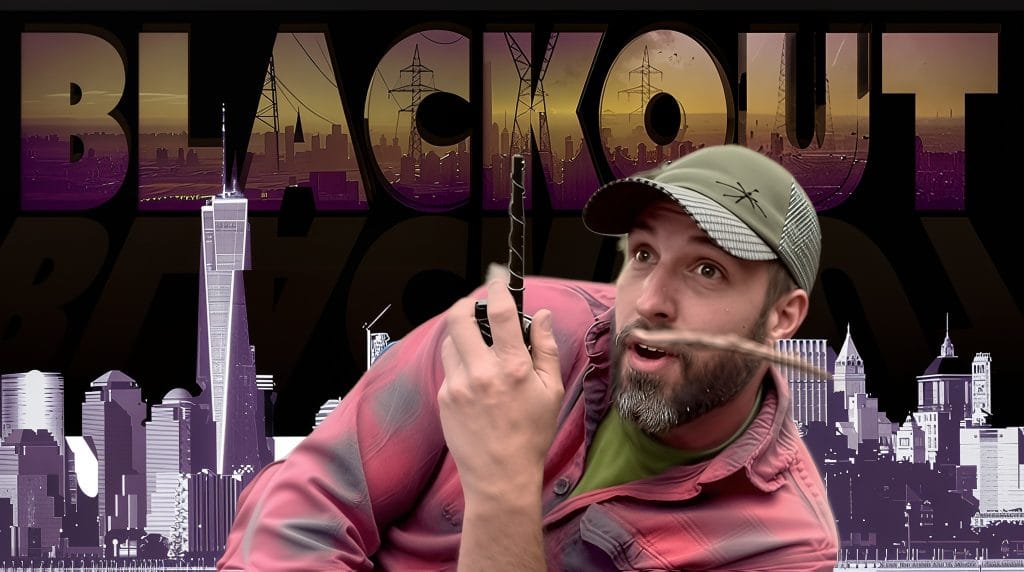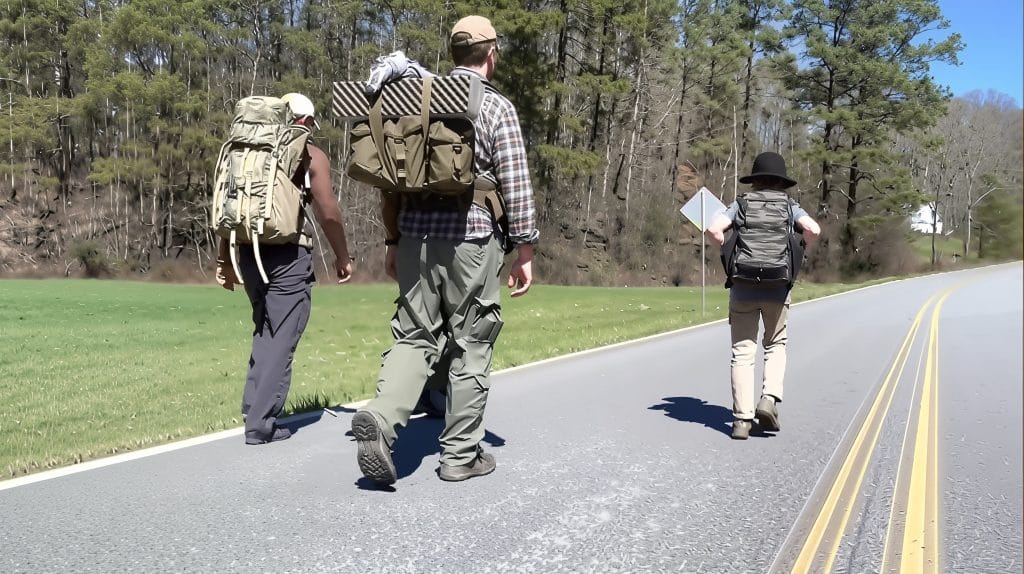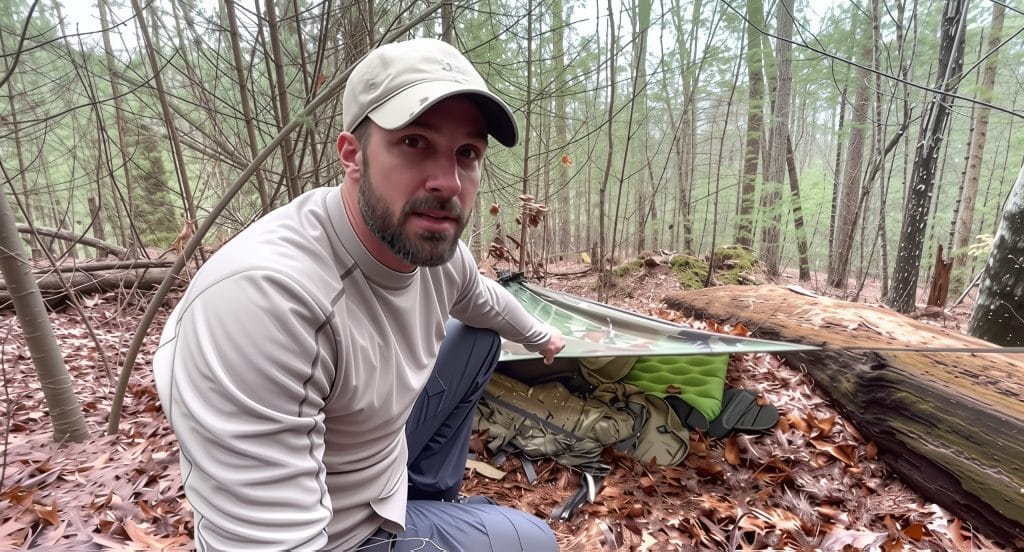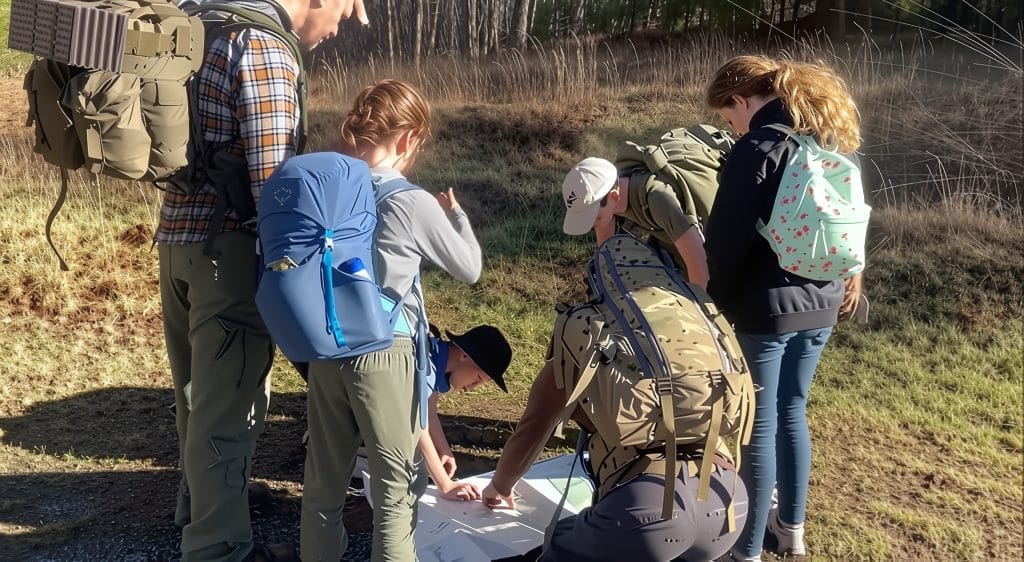
Master urban prepping with blackout survival skills for 2025. Learn apartment-friendly gear, water hacks, and community prep tips for city crises.
Join my Free Substack Newsletter Jason Salyer On3Ready for INSTANT ACCESS to my Free Survival Checklist, regular prepping tips and more!
💥 Upgrade to $5/month for premium checklists, field guides, and exclusive resources.
Urban prepping for blackouts involves compact gear, water security, and discreet skills for city apartments or suburbs. Carry a go-bag with a poncho, LifeStraw filter or Grayl Filter water bottle, wool layers, mini flashlight, lighter, power bank, cell phone with downloaded maps, freeze dried food/snacks and hand-crank radio to navigate power outages, floods, or evacuations. Build neighbor networks and map escape routes to stay safe in urban chaos.
Imagine a cyberattack blacks out your city. Elevators stop, ATMs fail, and stores empty fast. You're in a crowded apartment complex or suburban neighborhood, with kids to protect. In 2025, with grid attacks and urban flooding trending, this isn’t sci-fi. It’s a real risk. I’ve tested blackout survival in a busy suburb, and these beginner-friendly hacks should fit your life without needing a bunker.

Let’s pretend I was in a crowded apartment complex. I can navigate dark streets, sourced water from a drainage ditches, and set up a low-profile poncho shelter in a backyard. Or I can hunker down, lock the doors and live off my food storage supply.
“If water is crucial and at a premium where you are, make sure that you are stocking up when you find it.”
Imagine no elevators, crowded escape routes, barking dogs and nervous neighbors. Unlike rural prepping, city survival requires sheltering in place or navigating through / avoiding potentially dangerous crowds. Real events, like the 2021 Texas freeze that left urbanites without heat for days. Here’s how you can prep without cluttering your space.
Watch my Suburban Survival Strategies Video where I demonstrate a lot of these tactics.
Urban infrastructure is fragile when the lights go out. In December 2024, a power outage in Brooklyn left about 3,500 commuters stranded underground for hours after two F trains lost power between stations. In January 2024, a separate collision near 96th Street trapped additional passengers, some of whom self-evacuated onto darkened tracks. A dangerous move that delayed rescues and underscored just how quickly chaos sets in when systems fail.
Events like these reveal a hard truth: even in a modern city like New York, you can be stuck in the dark with no way out for hours. That’s why a blackout survival kit isn’t just about worst-case prepping. It’s about maintaining basic comfort, safety, and calm when everything stalls. A simple kit with clean water, a flashlight or headlamp, small energy snacks, a portable charger, and basic first aid can make a miserable, panicked wait far more manageable.
When transportation halts, cell towers jam, and emergency services are stretched thin, the smallest bit of self-reliance goes a long way. Survival kits give you a buffer between being a helpless commuter and a prepared one.
The 2023 Maui wildfires forced urban evacuations in minutes, where go-bags saved lives [2]. FEMA reports 70% of city dwellers lack basic kits, making urban prepping, blackout survival, and grid-down preparedness high-demand skills for 2025 [3]. Recent X posts show surging searches for “apartment emergency kit,” “urban blackout hacks,” and “city survival tips,” yet few guides offer practical, beginner-focused advice.
I have been teaching these readiness skills for over a decade. I want everyone to be prepared for the worst but always hope for the best!

| Item | Why It Matters | Field Note |
|---|---|---|
| Collapsible Water Jug | Stores 5 gallons in tight spaces | Fill early from taps; lightweight for evacuations. |
| LifeStraw Filter &
Grayl Filter Water Bottle |
Purifies urban water sources | Filters 1,000 + gallons; perfect for ditch or rooftop water. |
| Camo Poncho | Quick shelter | Set up in minutes on a fence or bench; blends in urban parks. |
| Wool Base Layer | Insulates in wet, cold outages | Dries fast, no odor. Ideal for extended wear. |
| Multi-Tool | very useful for problem solving | Compact for urban repairs; fits in a pocket. |
| Hand-Crank Radio | NOAA alerts, phone charging | Essential for blackout updates; no batteries needed. |
| Freeze Dried Meals & Energy Bars | 72-hour high-calorie food | Choose 400+ calorie bars; stash in a closet or go-bag. |


What is urban prepping for blackouts, and why is it trending in 2025?
Urban prepping for blackouts focuses on compact gear and skills for city power outages or evacuations. With cyberattack risks up 30% per FBI data, it’s a top concern. Start with a go-bag and water jugs to stay ready without clutter [1].
How do you secure water in an apartment or suburb during a blackout?
Collect from taps, local ponds, city fountains streams, rainfall and other sources early; filter and boil. Store 1 gallon per person daily in collapsible jugs.
What’s the best beginner gear for urban blackout survival?
Pack a poncho, wool layers, multi-tool, Grayl filter, high calorie bars and hand-crank radio. These fit a backpack and handle outages or floods. Avoid tents—too bulky and obvious for city use.
How do you set up a shelter in an urban blackout?
Just put on the poncho and lean up against a building, tree, etc. Or set it up in a plow point configuration in a secluded space.
Why choose wool for urban blackout prepping?
Wool insulates even when wet, dries fast, and resists odor. Perfect for cold damp cities when you may be wearing the same clothes for several days.
Should you use main roads or alleys in a city evacuation?
Use alleys or side streets to dodge crowds; hand-rail main roads for navigation. Map routes now—GPS can fail in blackouts.
How do you avoid hypothermia in an urban blackout?
Wear wool, stay dry with a poncho, and huddle in sheltered spots. Change wet socks and clothes if possible.
Why is community key in urban blackout prepping?
Neighbors share watches and resources. Solo survival fails in cities. Build ties now, as FEMA suggests, to boost odds in a crisis.
How much should beginners spend on urban blackout gear?
$100–$200 covers a LifeStraw ($20), poncho ($15-60), wool socks ($20), freeze dried food & snacks ($10-30), multi-tool and lighter ($30-70) and radio ($30). Prioritize multi-use gear for cost-effective prep.

I’m Jason Salyer, a former Human Performance Specialist for Naval Special Warfare and survival expert, sharing no-nonsense tips on my On3 YouTube channel and Substack.
[1] Wikipedia – Survival Skills. https://en.wikipedia.org/wiki/Survival_skills
[2] FEMA – Urban Emergency Preparedness. https://www.fema.gov/emergency-managers/risk-management/urban-preparedness
[3] NOAA – City Weather Hazards Guide. https://www.weather.gov/safety/city-hazards
Explore the gear I personally use and trust.
Preparation is freedom. Do not wait for the grid to fail to figure out what you should have done. Start now. Train your body, build your get home bag, and learn how to move with confidence when everything else stops.
📩 Substack → On3Ready Newsletter
📺 YouTube → ON Three Channel
🔥 Patreon → Join On Three Community
🌲 Website → GoOn3.com
💪 Fitness → Go On Three Fitness
👕 Apparel → Shop Here

